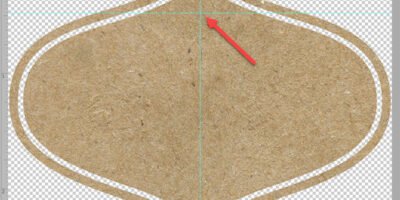From-the-Center Styles Tutorial
I have never been a fan of horizontal text or other design elements placed on top of a shape that has curves or directional sections. It doesn’t look realistic to me. If I wanted text on a flower, for instance, I would take a piece of text, and patiently (sometimes not-so-patiently) rotate it and clip it to different parts of the flower. It was a tedious process, and not fun at all. But from this process, my From-the-Center Styles were born. These styles were designed specifically to be used on a circular, or somewhat circular, element.
Here is how to get the most out of the Styles:
Positioning
In Photoshop:
- Apply a style to an element
- Double-Click on the Layer to bring up the Layer Style options
- Click on the pattern Overlay Option on the left to make it active
- Select the Move Tool
- Click on your element, hold down the left key on your mouse, and move the pattern around to your liking.
In Photoshop Elements:
- Apply a style to an element
- Go to the top Menu Bar: Layer > Layer Style > Scale Effects. You will be able to scale the pattern on the image, but not move it around. Sometimes this works; sometimes not. It depends on the shape and size of the element you are working with.
- The best and most flexible way for Elements users to use these Styles, is to utilize the PNGs:
- Clip a PNG to your element
- Select the Move tool and move it to position the PNG file where you want it.
TAKING IT A STEP FURTHER….
Patterns are set to Overlay Blend Mode and Scale at 50%. Both of these options can be adjusted to suit individual elements.
Patterns are not seamless, but that typically is not a concern with this style and the way it is used.
- Experiment with Blend Modes and Opacity levels of the Styles Effect
- Choose just certain colors to apply a style to (see example #2 below)
- Use the Warp Tool or other distortion tools to create special effects.
- If in Photoshop, right click on Effects on your stylized layer; choose Create Layer. This will place the pattern on its own layer above the element. In Photoshop Elements, if you are using PNGs, you already have the effect on its own layer.
- With the effect on its own layer, you can apply a Mask, and brush away parts that you don’t want, or that don’t suit the element you are working with.
Example #1
Here is a flower with a pattern style applied. No adjustments were made here.

Here is the same image after I centered the effect, applied a mask, and removed areas of the pattern I did not want.

Example #2
An additional option for Photoshop users is to go to the Top Menu Bar > Select > Color Range, and select a color.
In the flower pictured below, I selected the yellows; then Control + J to duplicate the selection; and finally applied a music style to the duplicated yellow selection to create this look:

With some of the pinks selected:

Here are just a few more examples for you:
In this example I used the Quick Selection tool to select 2 flower petals; Control + J to duplicate the selection; applied a text style to the duplicated petals.

A Before and After, using a pleated flower.

Watch a video where I demonstrate what is in this tutorial on my Karen Schulz Designs YouTube Channel
Just use your imagination and you’ll be creating unique elements and effects within no time at all!
Comments (6)
You must be logged in to post a comment.






Very cool effects!
Thanks, Dona!
Amazing Karen. I especially like the music style applied to the pink flower and you definitely achieved a completely different look with the pleated flower. Great tutorial as always!
Thank you, Beatrice! I’m glad you like the tutorial and the style!
Very subtle effects but what a difference. A great tutorial and wonderful designs in your styles. Thanks Karen.
Thanks, Renee. Yes, I prefer the subtle look for this particular flower, because of its pastel colors. But if you are working with brighter elements, changing the opacity will give you a better-matched look with that element. I’ve included instructions on how to do that, to provide the utmost in versatility. So glad you like these!